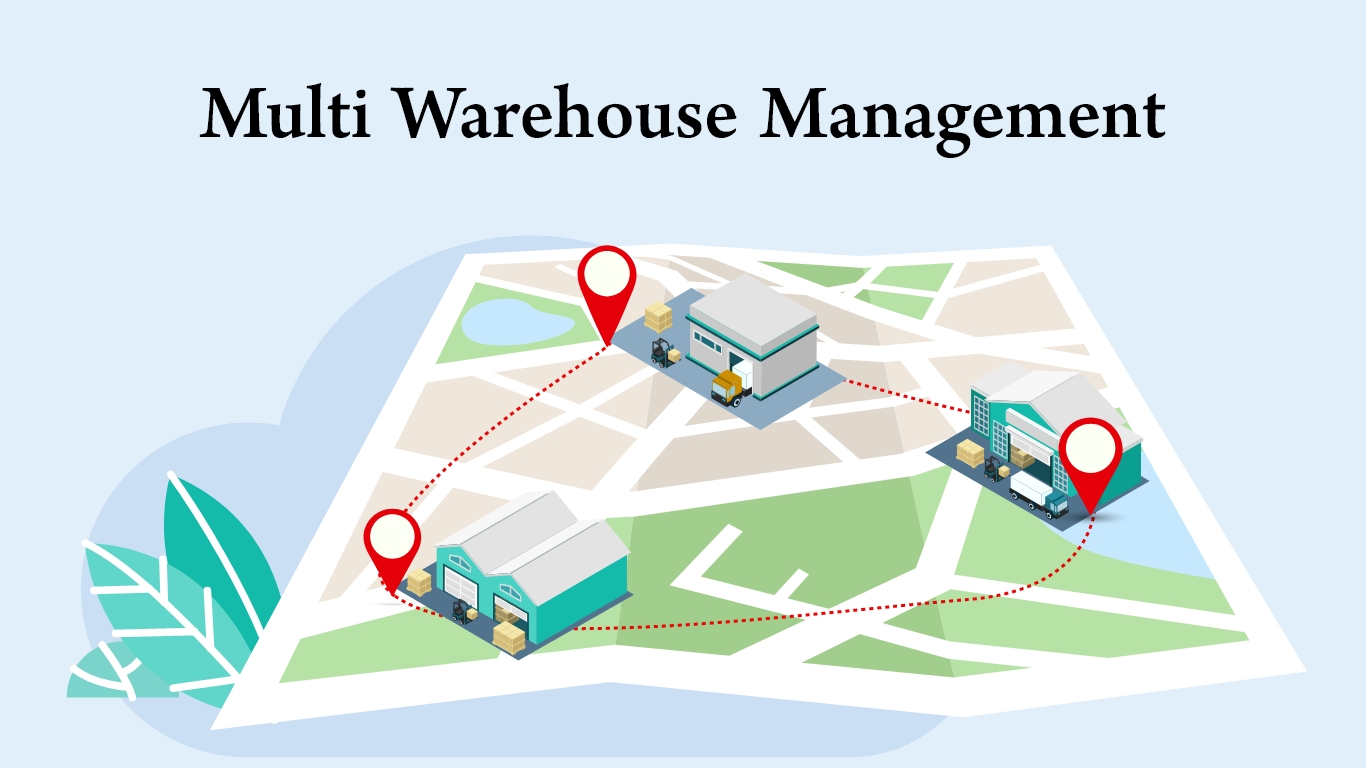Managing multiple warehouses efficiently is crucial for ecommerce businesses looking to optimise their fulfilment processes and provide excellent customer service.Multi-warehouse management is the process of overseeing and coordinating the operations, inventory, and logistics of multiple warehouse locations within a business.
The primary goal of multi-warehouse management is to strategically position inventory across different geographic locations to improve efficiency, reduce costs, enhance customer service, and ensure smooth operations. This involves coordinating inventory levels, order processing, shipping, and receiving activities across all warehouses while considering factors such as demand fluctuations, shipping distances, and customer locations.
Here are some strategies for effective multi-warehouse management:
1. Centralised Inventory Management:
mplement a centralised inventory management system that gives you a real-time overview of stock levels across all warehouses. This allows you to allocate inventory effectively and prevent overstocking or stockouts.A centralised system provides instant access to inventory levels, order statuses, and other key metrics across all warehouses. This real-time visibility enables informed decision-making.
By consolidating data from all warehouses, you can better analyse demand patterns, helping you make more accurate predictions and allocate inventory accordingly.
2. Advanced Warehouse Management Systems (WMS):
Invest in a robust WMS that can handle multi-warehouse operations. A sophisticated WMS can optimise inventory allocation, pick paths, and order batching to improve efficiency.
3. Inter-Warehouse Transfers:
Set up automated processes for transferring inventory between warehouses when one location is running low or experiencing high demand. This helps balance stock levels and prevents stockouts.Transfers help ensure that inventory is distributed evenly across warehouses, reducing the risk of stockouts in high-demand locations and preventing overstocking in others.
4. Demand Forecasting by Location:
Use historical data and analytics to forecast demand for each warehouse separately. This enables you to maintain appropriate inventory levels in each location and allocate resources effectively.
5. Dynamic Reorder Points:
Implement dynamic reorder point strategies for each warehouse based on its unique demand patterns. This ensures that replenishment orders are triggered at the right time.
6. Multi-Warehouse Fulfilment Logic:
Develop rules for multi-warehouse order fulfilment. For example, if an order contains items from different warehouses, determine whether to split the shipment or consolidate it based on factors like shipping costs and delivery times.
7. Cross-Docking:
mplement cross-docking strategies where applicable. Cross-docking involves transferring incoming goods directly from inbound to outbound shipping areas without long-term storage. This can expedite order fulfilment.
8. Real-Time Visibility:
Provide real-time visibility of inventory levels and order statuses to customers. This can help manage customer expectations and improve overall satisfaction.
9. Optimised Shipping Strategies:
Analyse shipping costs and delivery times from different warehouses to determine the most cost-effective and efficient shipping routes.
10. Regular Performance Analysis:
Continuously monitor the performance of each warehouse, including order processing times, inventory turnover, and fulfilment accuracy. Use this data to identify areas for improvement.
Challenges Warehouses Face Without a Multi-Warehouse Management System
Without the perfect system in place, merchants face many issues with regard to communication, inventory count and operational transparency.
1. Issues with cross-warehouse communications.
With warehouses operated by different teams, communication is bound to be a significant challenge. If separate warehouses operate on various management systems, insight into inventory, stock transfers, quantity tracking and any unexpected issues cannot be effectively communicated within the management system. It’s vital to set up points of contact and processes for communication within several steps of the fulfilment process. A warehouse can only operate as effectively as it’s set up to do. The more issues that happen within the warehouse, the higher the chance is that a customer will receive a late or inaccurate order, which is the worst case scenario for an ecommerce merchant.
2. Lack of oversight into inventory levels at all sites.
Without accurate and thorough oversight of inventory levels, every order placed leaves a merchant vulnerable to unforeseen delays and fulfilment issues. If stock is stored incorrectly, improperly identified, or simply misplaced, the management of any warehouse becomes significantly more complicated.
Discrepancies between purchase orders, storage locations or a number of different elements could seriously disrupt warehouse operations, even if it’s only occasional. By far, the most common issue warehouse managers face is inaccurate inventory counts.
3. Multi-Warehouse Rating.
Without the right tools in place, you’ll face a lot of trouble accessing shipping rates that remain accurate across multiple warehouses. If your system doesn’t take into account where your inventory is located, or whether it’s located in one or multiple warehouses, it can’t give you accurate rates. Without Multi-Warehouse Management, your customers will be left with inaccurate shipping rates, which will inevitably be passed on to you. To boot, your customers might experience delivery delays if a shipment is calculated to come from one location, but ships from another.
Conclusion:
Manage multiple warehouses in different countries, transfer orders, streamline your warehouse operations, and generate insightful reports to identify your sales trends and make accurate business decisions withLogixPlatform Warehouse Management System.A proper inventory management system is critical to the success of every business, especially when you have multiple warehouses.Contact Nowfor further assistance..


